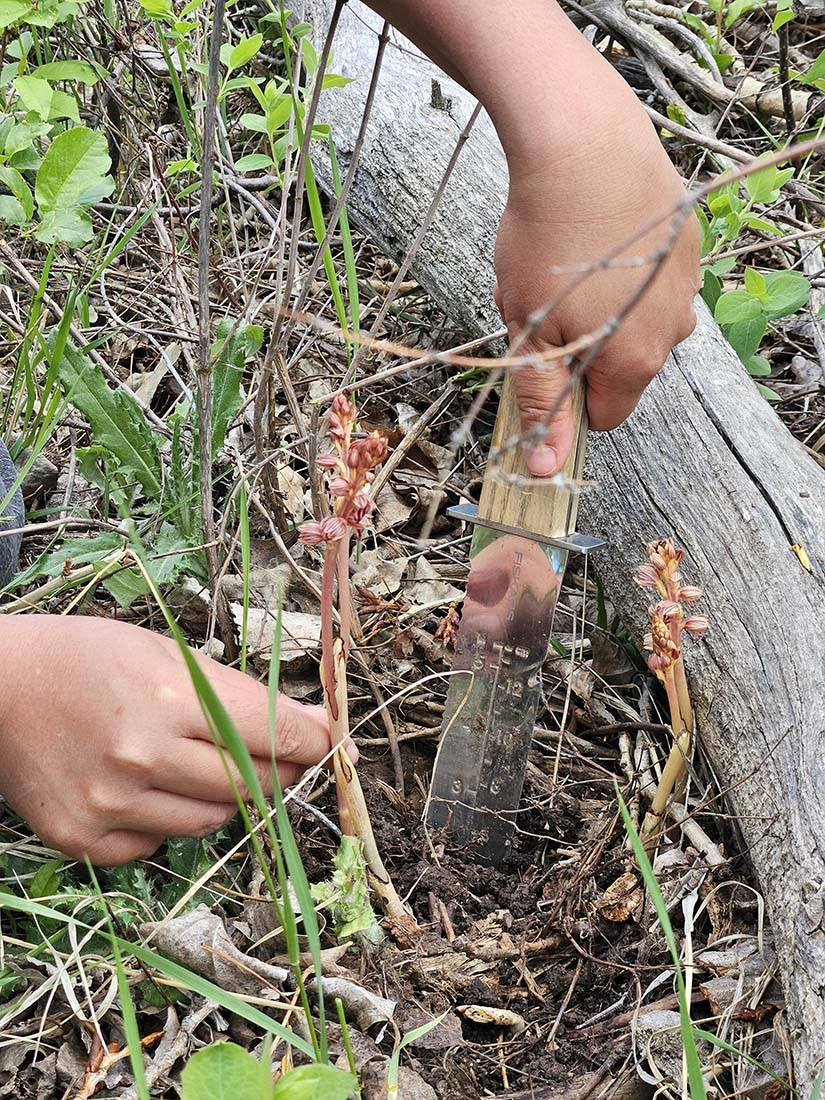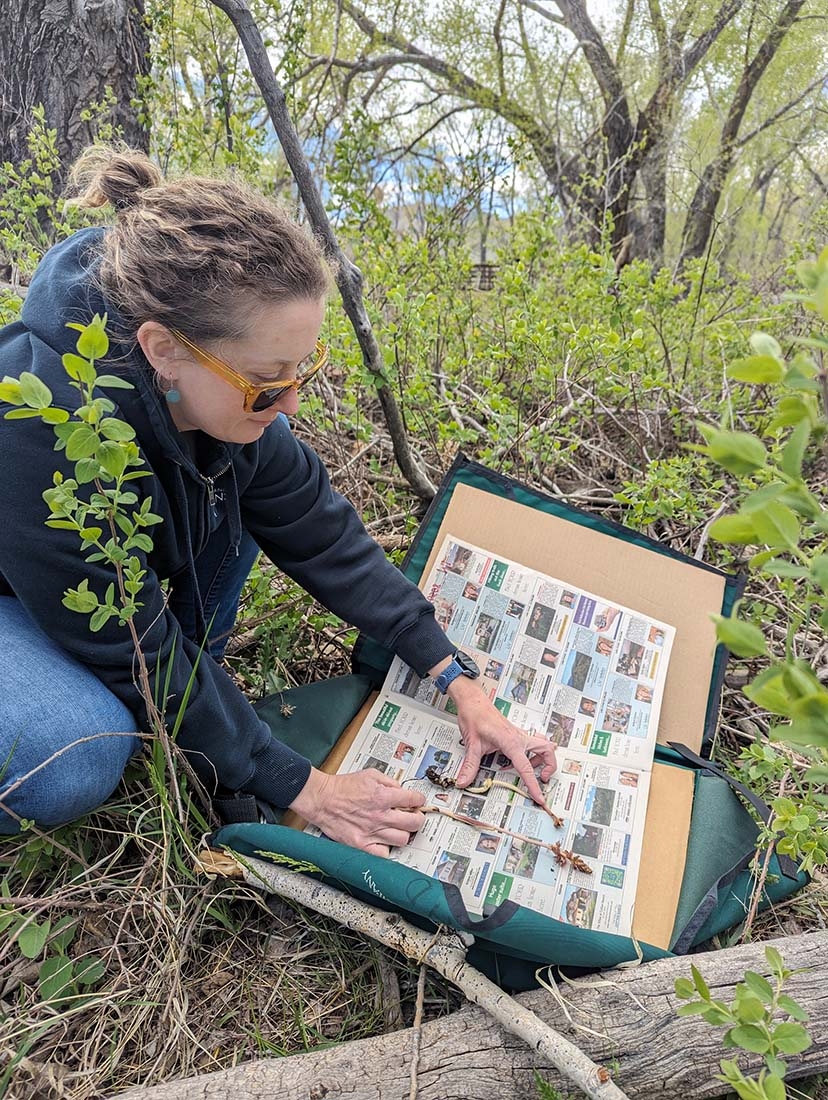A Newly Documented Orchid for Deer Creek Natural Area
During this year’s City Nature Challenge, researchers and citizen scientists alike in the Denver-Boulder metro area documented different lifeforms, capturing the biodiversity of the places we recreate at and call home. On April 26, several graduate students including myself, staff and volunteers from Denver Botanic Gardens visited Chatfield Farms’ Deer Creek Natural Area.
Underneath the eastern cottonwoods, western chokecherries and snowberries, I noticed a small, peach-colored plant emerging next to a log. Upon closer inspection, we realized this was a striped coralroot orchid (Corallorhiza striata). Striped coralroot orchids can’t photosynthesize, instead gathering all their nutrients and energy by parasitizing fungi. Plants like these are called mycoheterotrophs and are recognizable as they don’t have any green parts. Striped coralroot orchids can live for several decades.
This orchid species hadn’t been recorded at Chatfield Farms despite thorough plant surveys and is rarely documented in Jefferson County. Across different herbaria collections, there is only one striped coralroot voucher that was made in Jefferson County and that was in 1905—119 years ago.
Why hadn’t the plant been documented at Chatfield Farms before? Perhaps it was the timing of surveys — plant surveys were completed in late spring and early summer. While the striped coralroot orchid native range spans parts of Canada, the United States and Mexico, these plants usually grow in small numbers.
We returned to Deer Creek Natural Area two weeks later to collect a specimen as a voucher for the Kathryn Kalmbach Herbarium. Having physical specimens is important as a resource for research that cannot occur through written or photographic records.
First, we confirmed that there were several other striped coralroot orchids in the area. Without the high contrast of the fallen log, the other dozen individuals nearby were well-camouflaged. We wrote notes about the habitat the plants were found, and carefully extracted two flowering stems and roots.
The specimen will be mounted on an herbarium sheet, accessioned and integrated into the Kathyrn Kalmbach Herbarium. This means the specimen will be digitized and searchable through public databases like SEINET. We also made observations on iNaturalist, a database where striped coralroot orchids have been documented from four different areas in Jefferson County, including at Chatfield State Park 8 years ago. As of May 18, an iNaturalist user documented a striped coralroot orchid in almost the same spot. I encourage anyone to give citizen science projects a try — you never know what you may discover.
This article was contributed by Botany Assistant, Research, My-Lan Le.
Gallery








Add new comment